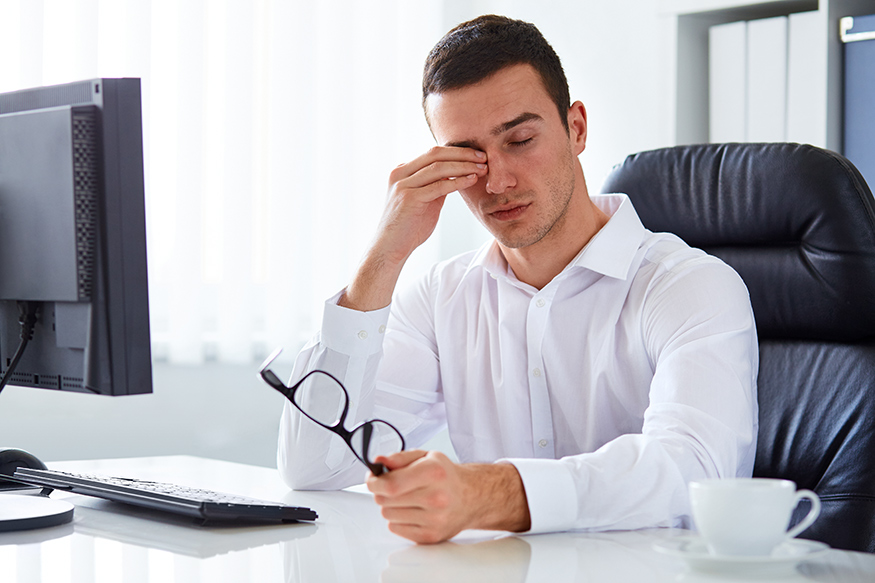Eye care professionals strongly recommend taking breaks throughout the workday to reduce eye fatigue and unnecessary eye strain.
Technology is woven into every aspect of our lives, as we use it in our communication, careers, entertainment, and much more. Although there’s no denying how helpful and convenient technology can be, it can also be quite harmful to our health, especially when it comes to our eyes. One of the most common issues is eye strain, which can have a variety of symptoms, including blurry vision, eye pain, headaches, and general fatigue.
But instead of trying to cut technology out of your life completely to protect your eyes, there are plenty of tips and tricks that can help you avoid digital eye strain while enjoying all of the technology you love.
Reduce Daily Blue Light Consumption
Reducing blue light, particularly in the evening hours, can play a big
role in eye health. Not only does blue light impact sleep quality, but
it also triggers eye fatigue after prolonged exposure. Digital devices
emit uneven amounts of visible light, including large amounts of high
energy blue light. Exposure to this type of light has been linked to
damaged retinal cells and disruption to the body’s natural sleep cycle
by interfering with melatonin production.
Focus on limiting your blue light intake once the sun goes down to help protect your eyes and promote healthier sleeping habits.
Take Breaks Often
For those with desk jobs, having to stare at a computer screen for hours
at a time is typical. Eye care professionals strongly recommend taking
breaks throughout the workday to reduce eye fatigue and unnecessary eye
strain. The most encouraged exercise for reducing eye strain is the
20-20-20 rule. Every 20 minutes, you should focus on something at least
20 feet away for at least 20 seconds. Incorporating this simple exercise
in your daily work routine can go a long way with giving your eyes
proper breaks so they can continue performing at their best.
Nurture Your Eyes
If you’ve heard it once, you’ve heard it a million times—diet plays a major role in overall health, including that of your eyes.
Many of us forget to eat nutrients that directly support the health of our eyes. Optometrists recommend a healthy, balanced diet with lots of green leafy vegetables, which provide high levels of anti-oxidants such as Lutein and Zeaxanthin.
In addition to a healthy and well-balanced diet, using moisturizing eye drops or blue light reducing glasses1 will prevent and nurture dry eyes.
Utilize Eye Care Technology
Now that we have a better understanding of the effects that technology
has on our eyes, companies have the capability to incorporate settings
and features in devices that reduce blue light emission. For example, a
technology2 is available that will reduce harmful blue light
emitted from the screen and eliminate screen flicker, while also
constantly adjusting screen brightness based on the user’s surroundings.
While screen time also plays a significant role in the development of
eye strain, it’s crucial to use quality screens that protect against eye
strain and fatigue.
Our eyes are vital organs that we need to remember to take care of and nurture. Incorporating these tips and tricks into your daily routine won’t completely eliminate the harmful effects of prolonged digital device use, but they will greatly reduce some of the side effects that we often grow accustomed to.
Vision 2020/USA Seeks ‘Call to Action’ on Improving Eye Health
Vision 2020/USA and allied organizations dedicated to improving vision
and eye health in the United States recently asked U.S. Surgeon General
Jerome M. Adams to initiate a “call to action” to mark the year 2020. A
formal request from 27 national organizations that are members of Vision
2020/USA was delivered on Jan. 18, 2019.
The request cites a National Academies of Sciences, Engineering, and Medicine report in 2016, “Making Eye Health a Population Health Imperative: Vision for Tomorrow,” which included recommendations

